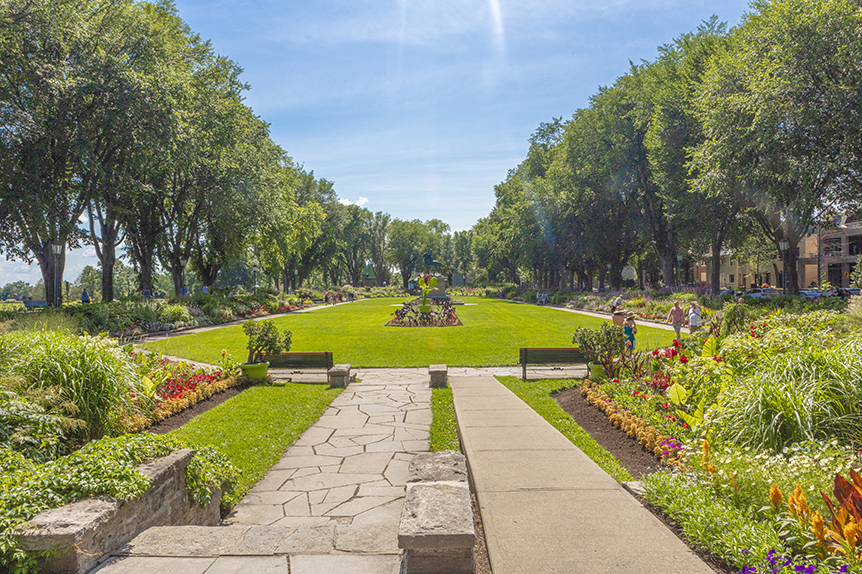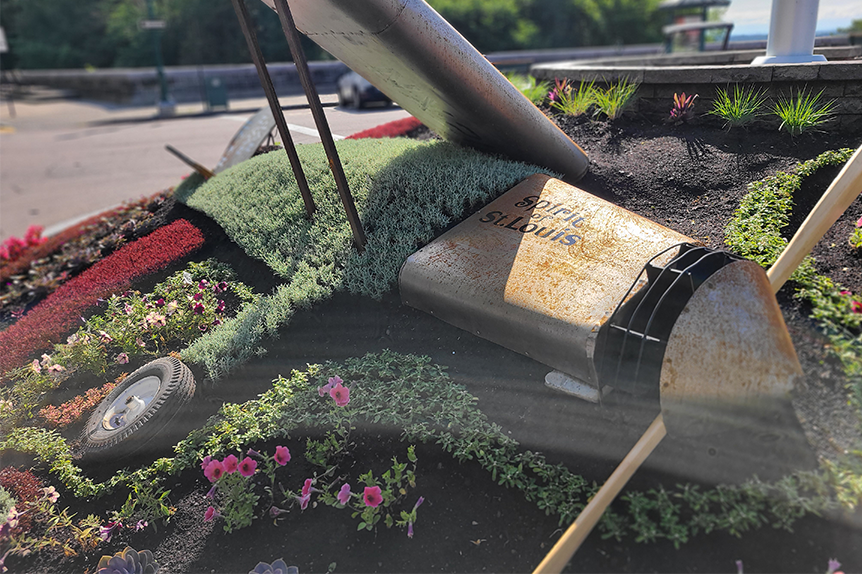
Come and appreciate this jewel of the Battlefields Park in all its beauty! Created in 1938 by landscape architect Louis Perron, the garden has its own special style: rectangular in shape and built slightly below ground level, it combines the French classical style with the British-style beds. Visitors have an opportunity to admire over 150 species of annuals, bulbs and, especially, perennials.
During summer time, hundreds of varieties ornate the flowerbeds, beneath the majestic elms branches. During the Fall season, come and appreciate the warm colors of seasonnal perennials and annuals. All October-long, sculptures offering an interpretation of legends associated with the Plains await visitors, in the daytime or in the evening.
A floral tradition
For the last 100 years or so, the National Battlefields Commission has been growing all the flowers used to beautify the park. The greenhouses, among the oldest active in Québec, produce some 45,000 annuals, biennials and perennials.
Mosaiculture (carpet-bedding)
Used since the early 1900s, carpet bedding consists in making raised drawings or lettering with specific plants (santolinasm alternentheras). Creativity, imagination and dexterity are the key words to describe mosaiculture (carpet-bedding). This particular technique has become an important part of the ornamental horticultural tradition of the park, the pride of our gardening expertise.
Moreover, the National Battlefields Commission was the first agency to use this type of gardening in Québec. You can admire mosaiculture at the base of the main monuments.

Other floral attractions
Apart from the Joan of Arc Garden, there are other displays worth visiting:
- the flower beds along Ontario Avenue, south side of the Musée national des beaux-arts du Québec, or near the greenhouses;
- the borders of the Centennial Fountain next to the Edwin-Bélanger Bandstand;
- the XII World Forestry Congress Commemorative Garden, which presents 28 emblematic tree species of Canada and the world;
- the Louis-Hebert Orchard, a tribute to the first French settler to successfully cultivate the land;
- the mosaics around the various monuments such as the Cross of Sacrifice;
- the entrance to the Des Braves Park;
- the Nature Trail that runs 1.8km through the wildest part of the park, in the footsteps of the early herbalists.

